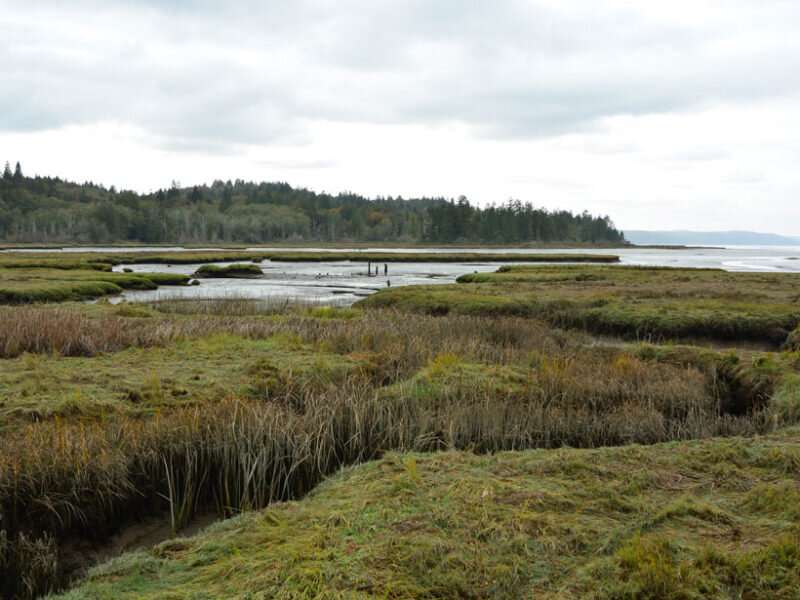Half of U.S. tidal marsh areas vulnerable to rising seas

Sea level is rising worldwide, thanks in large part to climate change. Rising seas threaten coastal communities and ecosystems, including marshes that lie at the interface between salt water and freshwater. Tidal marsh ecosystems feature distinct plants and play key ecological roles, such as serving as nurseries for fish. It is known that some tidal marshes can avoid destruction by migrating inland or through formation of new soil that raises their elevation, but a better understanding of how they are affected by rising seas could inform efforts to plan for and mitigate the effects.
New research by Holmquist et al. investigates the vulnerability of tidal marshes to sea level rise across the contiguous United States. The findings show, for the first time, that opportunities for resilience differ between more northerly and more southerly marshes across the country.
To help clarify the fate of tidal marshes in the contiguous United States, the researchers combined tide gauge data on sea level rise rates with soil formation rates reported in previous studies. They also incorporated information from local maps of water level, elevation, and land cover. Using these data, they calculated the potential for the marshes to adapt to rising seas by 2100 under several climate change scenarios.
The analysis revealed that different tidal marshes have different pathways for resilience to sea level rise. Specifically, more northerly marshes are more likely to lack opportunities to migrate inland, whereas more southerly marshes are more likely to lack the capacity to form and build up enough soil to sufficiently keep pace with sea level rise.
The researchers also found that depending on the degree of climate change, 43%–48% of tidal marsh area in the contiguous United States is vulnerable to destruction by sea level rise. These vulnerable areas tend to occur along the Gulf of Mexico and mid-Atlantic coasts, at sites where opportunities for both inland migration and vertical soil buildup are limited.
This study highlights the importance of considering local conditions when gauging the vulnerability of tidal marshes to rising seas. The findings could aid future research and planning efforts.
More information: James R. Holmquist et al, Localized Scenarios and Latitudinal Patterns of Vertical and Lateral Resilience of Tidal Marshes to Sea‐Level Rise in the Contiguous United States, Earth's Future (2021). DOI: 10.1029/2020EF001804
Provided by American Geophysical Union
This story is republished courtesy of Eos, hosted by the American Geophysical Union. Read the original story here.





















